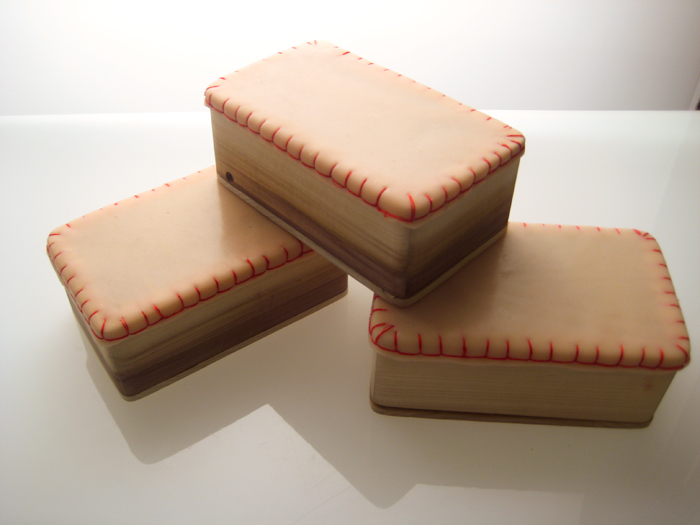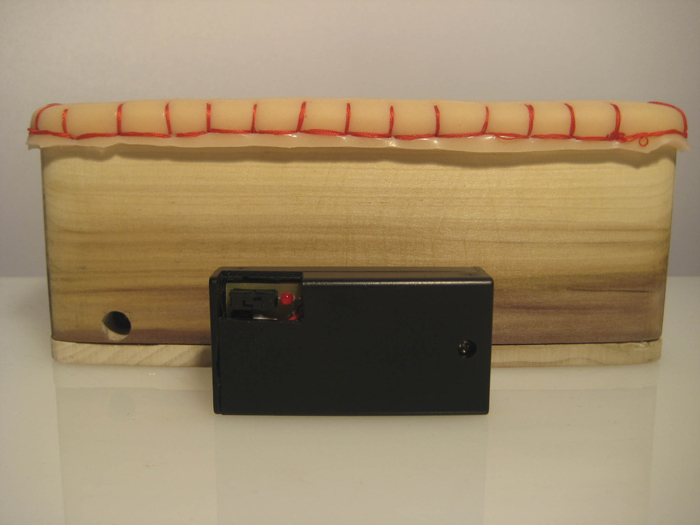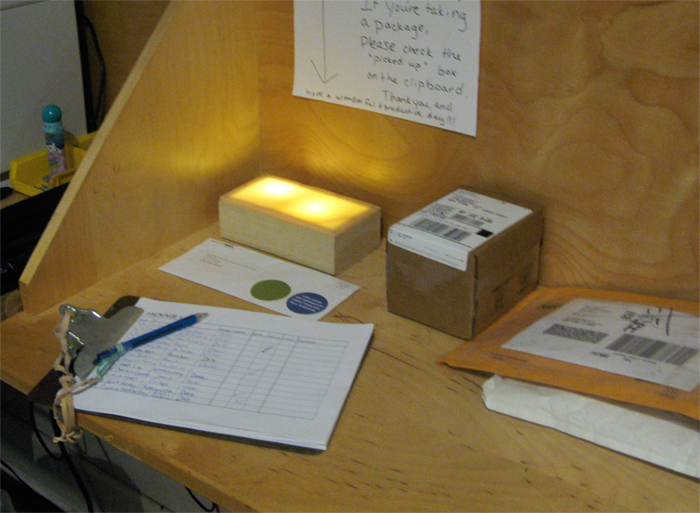emotional prostheses
alienation prosthesis
One of the themes that emerges while considering the nature of the body in augmented space is the idea that augmented space somehow estranges a person's self from their physical being. At the same time, one of the components of what has been called the post-modern condition is the feeling that the self is broken down, reproducible through technological means. That the modern body is a cyborg only makes the copying easier. More obvious is the disconnection from other people that online interaction encourages. Even beyond online interactions, that there is no real way of ever really knowing with any certainty how someone else feels can be pretty trying.
The alienation prosthesis both emphasizes and hopefully ameliorates some of this dissociation. When considering and constructing this system, I thought that it should embody these separations. In this way, the form of the alienation prosthesis is a number of boxes that the user/patient places around a space that they want to be actualized in. In considering prosthetics as bodily technologies rather than wearable technologies, I want to situate the alienation prosthesis as an example of a physically distributed body in space. Still, the body in this case canŐt be too distributed. The point of this prosthesis is to effectively reassure the user/patient of their existing in space.
Sometimes, when I am in the throes of depression, I lose a sense of scale with respect to the world and myself. I don't feel like I can actually effect any changes in reality--I lose a sense of agency. This prosthesis is intended to be an "always on" interaction that grounds in space, reassuring the user/patient that they are there, causing changes in space. Ultimately it is a simple indicator of presence or absence, primarily for the user/patient and incidentally for anyone around him or her.
The system itself is three wooden (poplar) boxes with silicone tops laced on by red thread. Inside the box is a simple microcontroller circuit that reads the signal strength from an xbee radio and gives a varying pulse-width output to bright LEDs inside the box. The LEDs glow based on the strength of a radio mounted to a keychain that is kept on the user/patient's person. As the user/patient approaches the any of the boxes, that particular box dims. In this way, the boxes will visually triangulate a body in space, grounding it in a physical reality.


